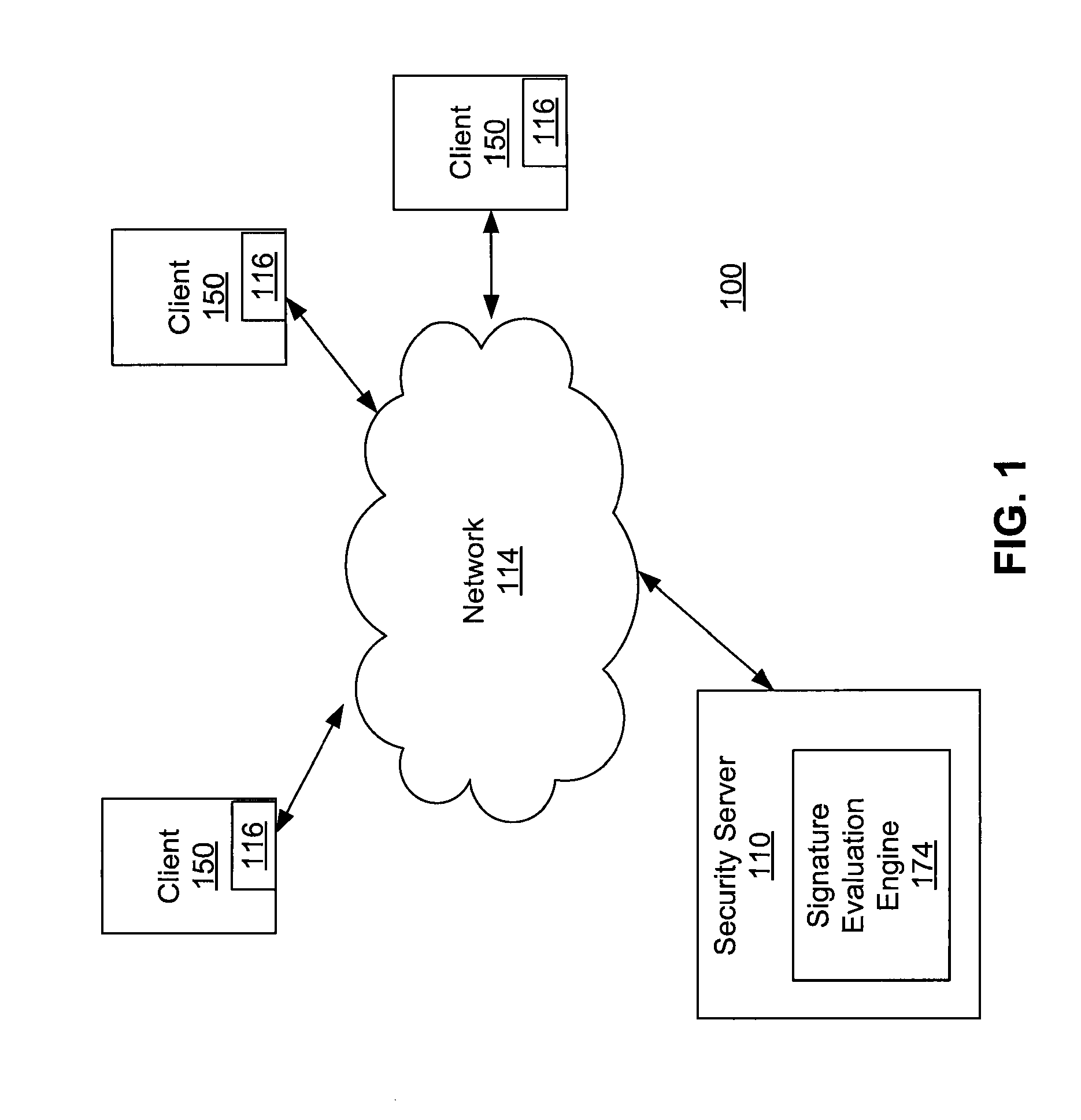Reputation based identification of false positive malware detections
a malware detection and reputation-based technology, applied in the field of computer security, can solve the problems of invalidated signatures producing false positive results on user computers, and it is impossible to validate against all possible innocuous entities
- Summary
- Abstract
- Description
- Claims
- Application Information
AI Technical Summary
Benefits of technology
Problems solved by technology
Method used
Image
Examples
Embodiment Construction
[0020]FIG. 1 is a high-level block diagram of a computing environment 100 according to one embodiment. FIG. 1 illustrates a security server 110 and three clients 150 connected by a network 114. Only three clients 150 are shown in FIG. 1 in order to simplify and clarify the description. Embodiments of the computing environment 100 can have thousands or millions of clients 150 connected to the network 114.
[0021]The security server 110 interacts with the clients 150 via the network 114. The security server 110 executes a signature evaluation engine 174. The signature evaluation engine 174 provides malware signatures to the clients 150. The signature evaluation engine 174 receives signature detection events from the clients 150 describing the identification of suspicious entities. The term “suspicious entities”, as used herein, refers to entities such as software applications or files suspected to contain malware based on the detection of a malware signature in information associated wi...
PUM
 Login to View More
Login to View More Abstract
Description
Claims
Application Information
 Login to View More
Login to View More - R&D
- Intellectual Property
- Life Sciences
- Materials
- Tech Scout
- Unparalleled Data Quality
- Higher Quality Content
- 60% Fewer Hallucinations
Browse by: Latest US Patents, China's latest patents, Technical Efficacy Thesaurus, Application Domain, Technology Topic, Popular Technical Reports.
© 2025 PatSnap. All rights reserved.Legal|Privacy policy|Modern Slavery Act Transparency Statement|Sitemap|About US| Contact US: help@patsnap.com



